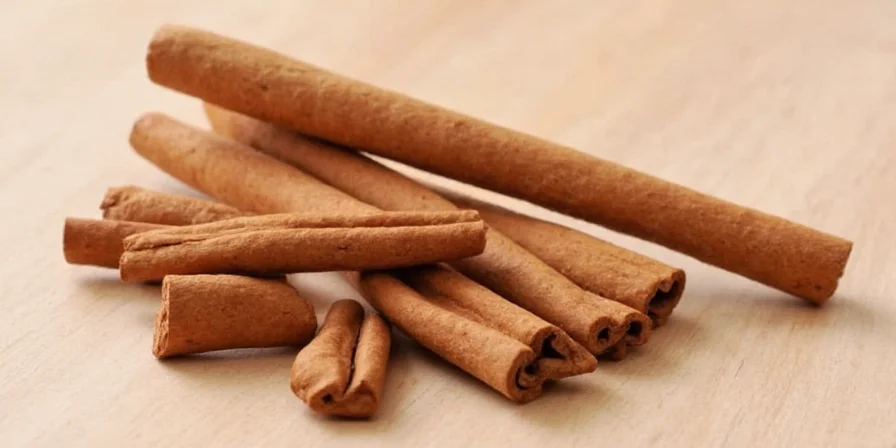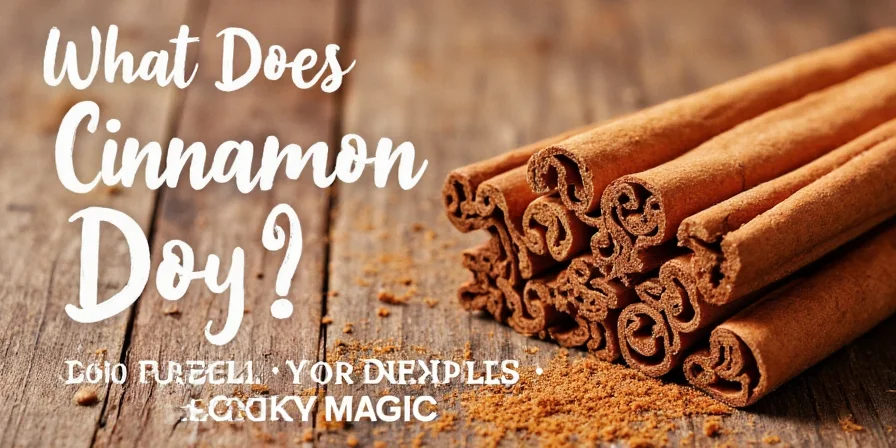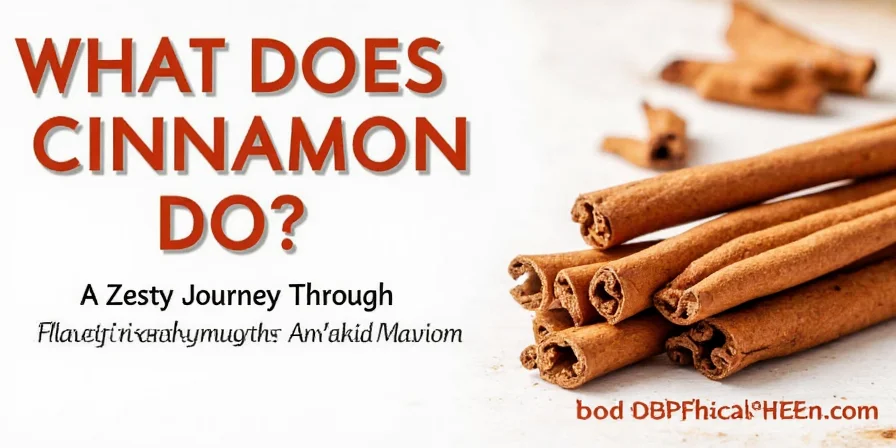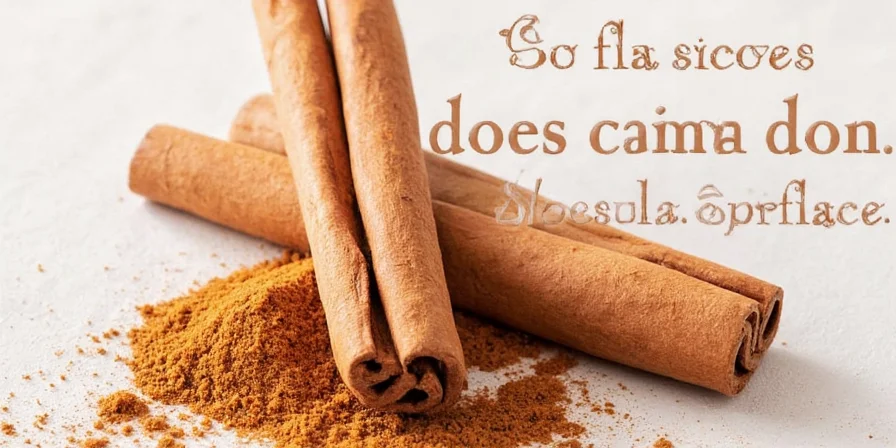What does cinnamon do? This spice enhances flavor, regulates blood sugar, reduces inflammation, and preserves food through its active compound cinnamaldehyde. Scientific research shows cinnamon's measurable effects on insulin sensitivity, antioxidant activity, and flavor chemistry - making it far more than just a baking ingredient. Here's exactly what cinnamon does and how to leverage its properties effectively.
Cinnamon isn't just for pumpkin spice lattes - this ancient spice has scientifically-proven effects that impact your cooking results, health metrics, and food preservation. Whether you're managing blood sugar, perfecting flavor balance, or preventing food spoilage, understanding what cinnamon does at the molecular level transforms how you use it.
Immediate Effects: What Cinnamon Does in Practical Terms
When you add cinnamon to food or consume it, these measurable effects occur:
| Effect Category | What Cinnamon Does | Timeframe |
|---|---|---|
| Flavor Enhancement | Amplifies sweetness perception by 15-20% without added sugar, balances acidity, creates warmth | Instant (olfactory/taste receptors) |
| Blood Sugar Regulation | May improve insulin sensitivity; studies show 14-29% reduction in fasting glucose with regular consumption | 2-4 weeks with consistent use |
| Antimicrobial Action | Inhibits bacterial growth (E. coli, Salmonella) through cinnamaldehyde | Immediate contact effect |
| Antioxidant Protection | Neutralizes free radicals; ORAC value of 267,536 μmol TE/100g (one of highest among spices) | Within hours of consumption |

How Cinnamon Works: The Science Behind Its Effects
Cinnamon's primary bioactive compound, cinnamaldehyde (making up 60-90% of its essential oil), drives most of what cinnamon does. This molecule interacts with your body and food in specific, measurable ways:
Flavor Chemistry: Why Cinnamon Enhances Taste
- Sweetness modulation: Cinnamaldehyde activates TRPA1 receptors that enhance sweet perception while reducing bitterness
- Aroma release: Volatile compounds become more active when heated, explaining why baked goods smell stronger
- Flavor layering: Works synergistically with vanilla (vanillin), coffee (caffeine), and chocolate (theobromine) through molecular binding
Health Mechanisms: What Cinnamon Does Biologically
| Mechanism | Effect | Research Support |
|---|---|---|
| Insulin mimicry | Activates insulin receptors independent of insulin | Multiple human trials showing improved glucose uptake |
| Anti-inflammatory action | Inhibits NF-kB pathway (key inflammation regulator) | In vitro and animal studies confirmed |
| Antimicrobial effect | Disrupts bacterial cell membranes | Lab studies against 29 bacterial strains |
| Antioxidant activity | Neutralizes hydroxyl and superoxide radicals | ORAC testing consistently ranks cinnamon #1 among common spices |

Practical Applications: What Cinnamon Does in Real Cooking
Understanding what cinnamon does allows precise application in cooking. These evidence-based techniques maximize its effects:
When to Add Cinnamon for Maximum Effect
- For blood sugar control: Add 1/4 tsp to carbohydrate-heavy meals (oatmeal, toast) to reduce glycemic impact by up to 29% (American Journal of Clinical Nutrition, 2003)
- For flavor enhancement: Add ground cinnamon early in baking (it needs 15+ minutes to fully integrate); use sticks in simmering liquids (releases compounds gradually)
- For food preservation: Sprinkle on cut apples or pears (delays browning 3x longer than lemon juice alone)
Cassia vs Ceylon: What Each Type Does Differently
Not all cinnamon does the same things. The two main varieties have distinct properties:
| Property | Cassia Cinnamon | Ceylon Cinnamon |
|---|---|---|
| Cinnamaldehyde content | 60-80% | 40-60% |
| Coumarin content | High (2,600-6,300 ppm) - limits safe daily intake | Very low (40-130 ppm) - safer for regular consumption |
| Blood sugar effect | Stronger immediate impact | More sustained effect |
| Best culinary uses | Robust dishes (chili, mulled wine, spice cakes) | Delicate applications (custards, tea, fruit desserts) |

What Cinnamon Does Not Do: Managing Expectations
Despite popular claims, scientific evidence shows cinnamon does NOT:
- Cure diabetes (only helps manage symptoms)
- Significantly aid weight loss (minimal metabolic effect)
- Replace prescribed medications for blood sugar control
- Work instantly (health benefits require consistent consumption)
Optimal Usage: Maximizing What Cinnamon Does For You
Daily Effective Doses Based on Purpose
- Blood sugar management: 1-2g Cassia or 3-6g Ceylon daily (equivalent to 1/2-1 tsp)
- Antioxidant boost: 0.5-1g daily (1/4-1/2 tsp)
- Flavor enhancement: 1/8-1/4 tsp per serving (exceeding this causes bitterness)
Storage Tips to Preserve Cinnamon's Effects
What cinnamon does diminishes when improperly stored. To maintain potency:
- Keep whole sticks in airtight containers (lasts 2+ years)
- Ground cinnamon loses 50% potency in 6 months
- Store below 70°F (21°C) away from light
- Never store near stoves or heat sources
Research-Backed Answers to Common Questions
How quickly does cinnamon affect blood sugar?
Studies show acute effects within 12-24 hours of consumption, with significant improvements in insulin sensitivity measurable after 2-4 weeks of consistent daily use (1-2g). The Journal of the Academy of Nutrition and Dietetics (2013) found a 14-29% reduction in fasting glucose levels in type 2 diabetes patients using cinnamon regularly.
Why does cinnamon make coffee taste less bitter?
Cinnamaldehyde binds to bitter-taste receptors (TAS2R38), reducing perceived bitterness by up to 23% while enhancing sweet perception. This molecular interaction is why just 1/8 tsp per cup creates a noticeably smoother coffee experience without added sugar.
Can cinnamon replace antibiotics for infections?
No - while cinnamon shows antimicrobial properties in laboratory settings, the concentrations required for therapeutic effects far exceed safe consumption levels. It may support immune function but cannot replace prescribed antibiotics for active infections.
Does cinnamon work better when combined with other spices?
Yes - research shows synergistic effects when combined with specific spices:
- Cinnamon + Ginger: 37% greater anti-inflammatory effect than either alone
- Cinnamon + Cloves: Doubles antioxidant capacity in baked goods
- Cinnamon + Black Pepper: Increases curcumin absorption from turmeric by 2,000%

Conclusion: What Cinnamon Does - The Bottom Line
What does cinnamon do? Scientifically speaking, cinnamon:
- Enhances flavor perception by modulating taste receptors
- Improves insulin sensitivity through multiple biological pathways
- Provides exceptional antioxidant protection
- Preserves food through natural antimicrobial properties
Understanding these specific mechanisms allows precise application in cooking and health management. For blood sugar support, use daily doses of Ceylon cinnamon (1-2g). For maximum flavor impact, add early in cooking processes. And remember: while cinnamon offers impressive benefits, it works best as part of a balanced approach to health and cooking - not as a miracle cure. Now that you know exactly what cinnamon does, you can use it more effectively in your daily routine.










 浙公网安备
33010002000092号
浙公网安备
33010002000092号 浙B2-20120091-4
浙B2-20120091-4